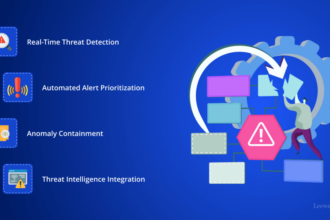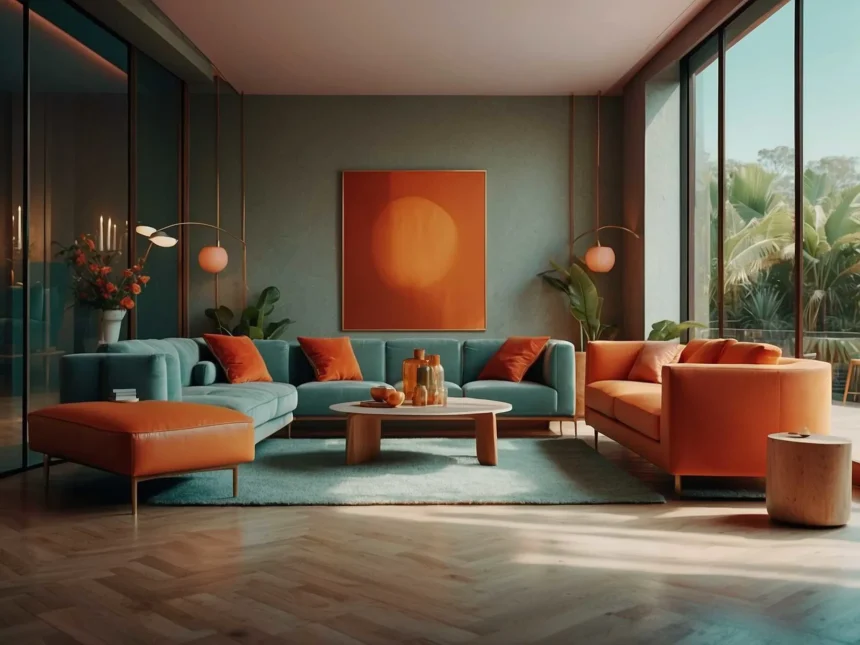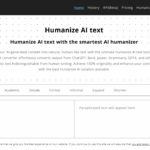I will focus on AI Tools for Interior Design Visualization, which are changing the approach designers and homeowners take towards planning spaces and their experience with them.
These tools incorporate AI capabilities for crafting 3D models, proposing layout configurations, and trying out various furniture, color schemes, and décor pieces on spaces.
With advanced AI visualization tools, the time and errors associated with the processes are greatly diminished, which leads to the streamlining of the interior designing process.
What is Interior Design Visualization?
Interior design visualization entails producing accurate digital depictions of an interior space long before physical construction or renovation work begins.
It assists in showcasing for ready perception the layout, color schemes, furniture arrangement, lighting, as well as textures for all the relevant parties, whether that be the designers, clients, or stakeholders.
Modern tools such as 3D modeling, rendering software, and virtual reality enable designers to test and modify various design concepts, make practical choices, and communicate their design concepts efficiently to all the relevant stakeholders. This practice minimizes errors, saves time, and guarantees that the end result meets the client’s expectations.
How To Choose AI Tools for Interior Design Visualization
Here’s a structured guide on selecting AI tools for interior design visualization:
Ease of Use – Select tools with intuitive interfaces that don’t require advanced technical skills.
Realistic Rendering – The AI must generate high-quality photorealistic 3D visuals with accurate textures.
Customization Options – The interiors must be changeable with respect to color, materials, furniture, and lighting.
Integration Capabilities – Ensure compatibility with CAD software, BIM tools, or other design platforms.
Speed and Efficiency – Minimal design processing and rendering times are critical for efficiency.
AI-powered Features – AI suggestions for layouts, styles, or décor can be useful for creative enhancement.
Pricing and Subscription – Relevant to budget are predetermined pricing models, including subscriptions and free trials.
Customer Support and Learning Materials – These resources help make the most out of the AI tools.
Key Point & AI Tools for Interior Design Visualization List
| AI Tool | Key Point / Feature |
|---|---|
| MyArchitectAI | Generates detailed 3D interior layouts with customizable furniture and lighting. |
| Midjourney v7 | Creates high-quality AI-generated visual concepts and artistic interior renders. |
| PromeAI | Offers automated interior design suggestions and style recommendations. |
| RoomGPT | Transforms 2D room images into realistic 3D designs with AI-powered visualization. |
| ReimagineHome.ai | Reimagines existing spaces with new décor, layouts, and color schemes. |
| Getfloorplan | Automatically generates floorplans from sketches or photos for design planning. |
| Gepetto | AI-driven furniture placement and style optimization for virtual interiors. |
| Interior AI | Provides realistic interior design mockups and material simulations. |
| Virtual Staging AI | Stages empty rooms digitally for real estate or design visualization purposes. |
| DecorMatters AI | Offers interactive design tools and AR visualization for home decoration ideas. |
1.MyArchitectAI
MyArchitectAI is Shyft’s latest feature. It is a sophisticated AI tool for professionally visualizing interiors and transforming designs into real 3D layouts instantly.
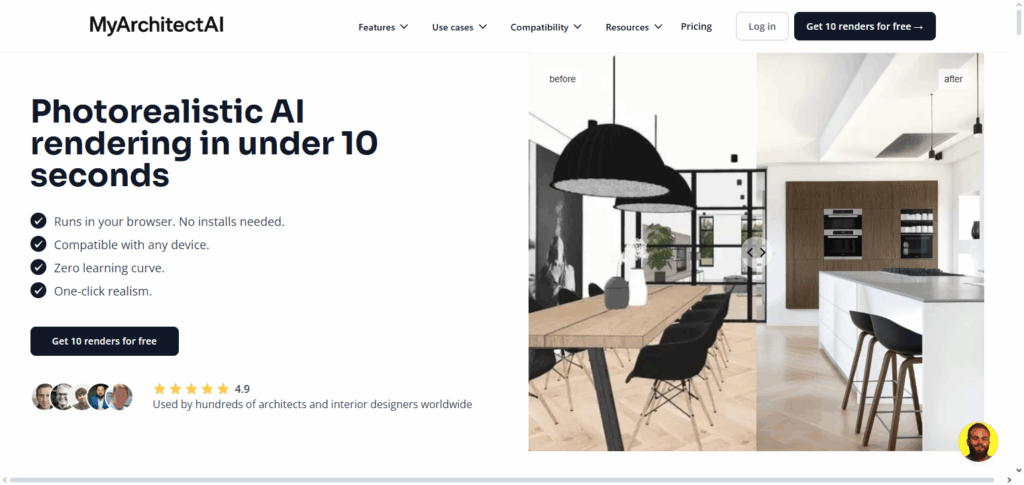
MyArchitectAI stands out for its capability to produce intricate interiors whereby designers can simulate and manipulate the arrangement of furnishings, lighting, textures, and colors in an avirtual setting.
Accurate and customizable visualization enables both the clients and the designers to make precise decisions ahead of execution. MyArchitectAI reduces the workload in modern interior planning, improves precision, increases creativity, and minimizes mistakes, making it a contemporary must-have tool for every interior designer.
2.Midjourney v7
Midjourney v7 is an advanced tool in artificial intelligence which specializes in visualization pertaining to interior design, as it creates photographic quality interior renders and artistic imagery. Since it is capable of translating design concepts into breathtaking designs, designers can easily experiment with different looks and feels.

Midjourney v7 interprets the imaginative components of space including lighting, texture, and decorative components, which aid in showcasing the envisioned results, thus enhancing the understanding of the designers and their clients. It enhances the creativity of the user, enables earlier completion of tasks, and leads to better informed, attractive, and visually rational decisions in the design of the interiors.
3.PromeAI
PromeAI is an advanced solution in interior designing AI technologies which centers around smart styling and automating design proposals. Its distinct competency is in providing in-depth analysis with respect to room layout and providing tailored recommendations for furniture placement, color schemes, and even decor based on user’s preferences.

With PromeAI, designers and home-owners are equipped with accurate data, providing them with swift decisions backed by comprehensive 3D visualizations. This tool greatly aids in the creative process, minimizes inefficient repetitive work, and drastically improves productivity. Thus, PromeAI is a key solution for anyone who seeks to plan and visualize interiors.
4.RoomGPT
RoomGPT is an advanced artificial intelligence tool for visualizing interior designs and transforming simple 2D images of rooms into detailed 3D models. Its distinctive feature is rapid generation of multiple realistic interior variations, enabling effortless experimentation with furniture and décor.
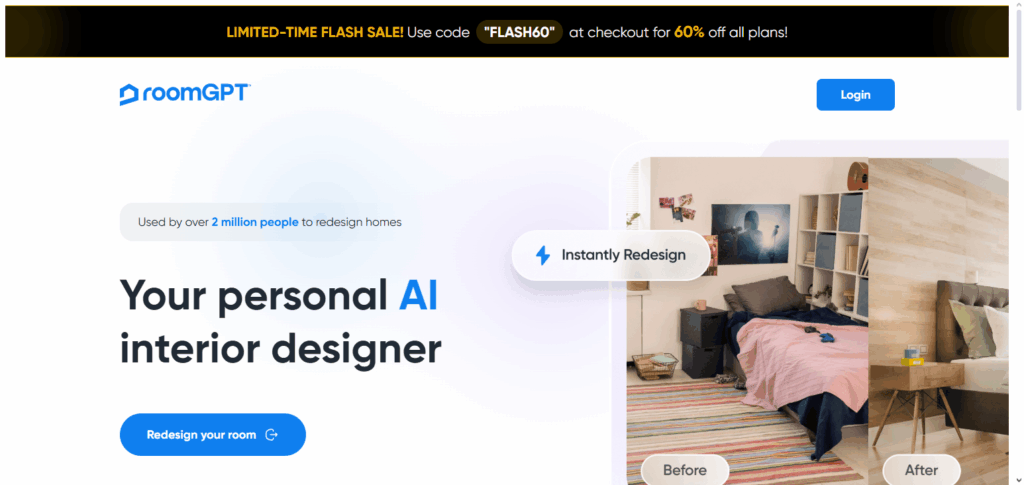
By providing realistic visualizations, RoomGPT helps designers and homeowners appreciate potential outcomes, minimizing expensive errors. This tool boosts creativity, accelerates the design process, and ensures each space is optimally functional and visually attractive.
5.ReimagineHome.ai
ReimagineHome.ai is a cutting-edge artificial intelligence tool for visualizing the interior design of homes. It focuses on the spatial reorganization of the existing areas, décor, and color schemes of a home. Its core competence is room reimagination, which allows users to experiment on a design virtually.
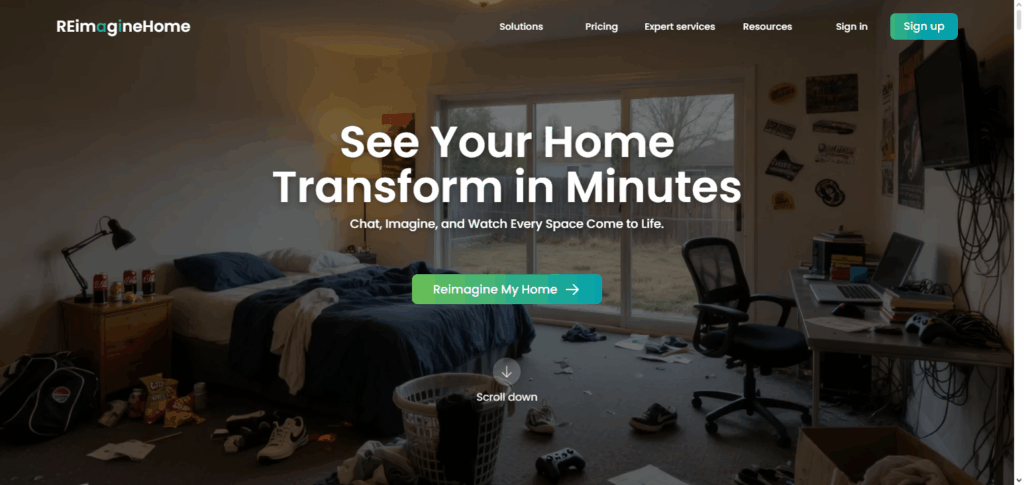
For the users, especially the designers and homeowners, the generation of high-quality three-dimensional visualizations facilitates previewing numerous stylistic alternatives, optimizing furniture arrangement, and testing lighting effects.
ReimagineHome.ai assists in making quick and informed decisions, minimizes renovation risks, and promotes a creative approach, thus underscoring the importance of the tool in contemporary interior design planning.
6.Getfloorplan
Getfloorplan is an AI-centric tool tailored for visualizing interior designs by generating precise floorplans from sketches, photographs, or measurements. Its distinctive capability is transforming rough sketches or photographs into accurate digital floorplans, allowing interior designers to optimize furniture, room measurements, and circulation pathways for efficient design.
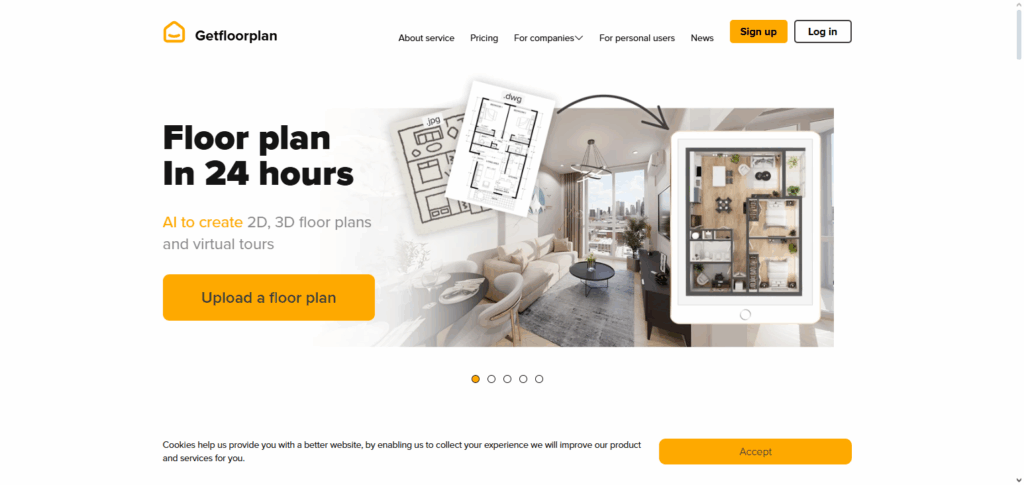
With Getfloorplan, clients and designers are able to visualize spaces structurally, reinforcing spatial understanding before construction or renovation, providing an overview during the design phase. This AI tool improves design with practical insights and data-mined intelligence while also minimizing errors and saving time.
7.Gepetto
Gepetto is an intelligent system for visualizing interior spaces which specializes in layout optimization for enhanced furniture arrangement and placement. Gepetto’s unmatched capability is in its AI-enabled functional and aesthetic suggestions for accentuated room optimization, which caters to any room size and type.
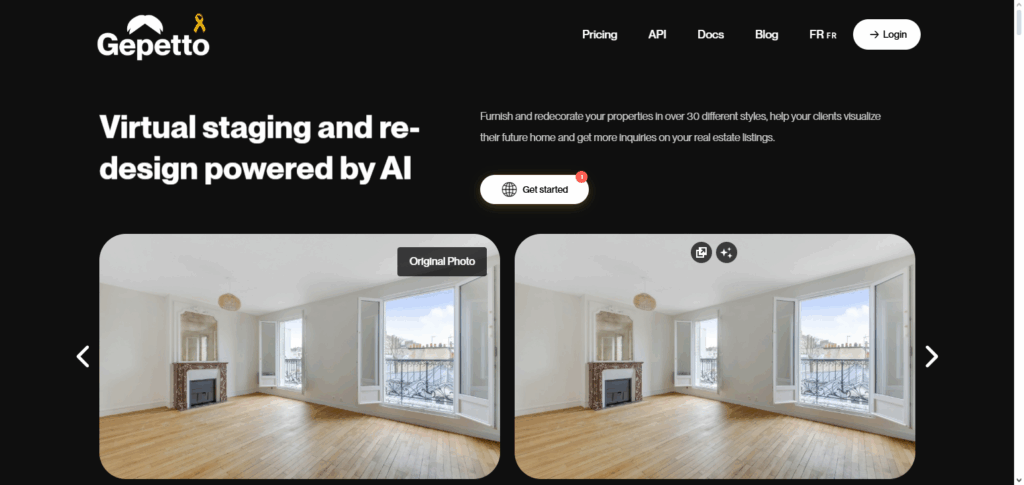
Gepetto empowers designers and homeowners to work on décor, light, and texture manipulation pre-implementation by generating realistic 3D models. This innovation saves time, minimizes expensive errors, and fosters creativity, thus offering indispensable value in contemporary interior design undertakings.
8.Interior AI
Interior AI is an advanced AI tool specializing in creating hyper-realistic 3D visualizations of interiors. Its most notable capability is the accurate previews of spaces users receive by simulating a wide range of furnishings, lighting, and material options.
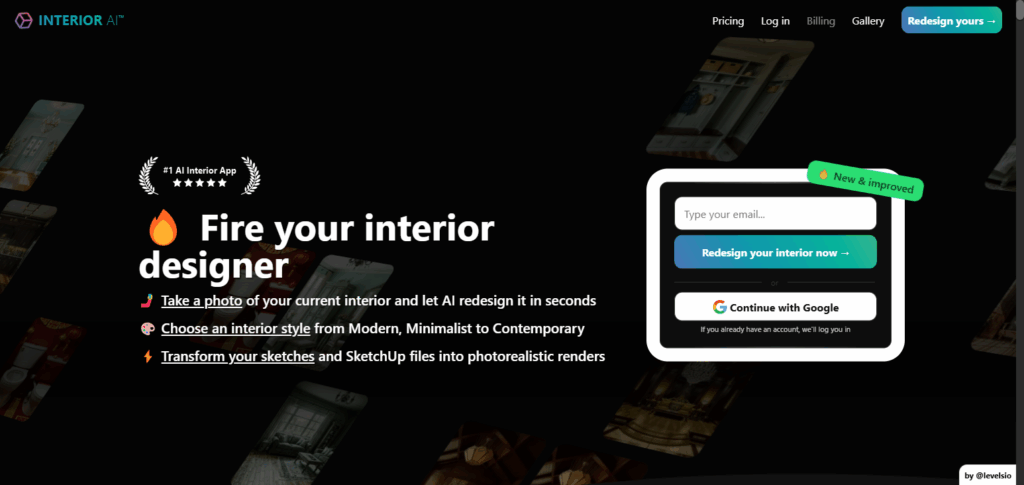
Interior AI enhances creativity and saves time by minimizing errors in design projects, as both designers and homeowners can virtually test countless options. This tool guarantees that all interiors projects are accurate, visually striking, and synchronized with the client’s expectations.
9.Virtual Staging AI
Virtual Staging AI is a dedicated AI algorithm that focuses on furnishing spaces digitally, thus transforming a blank canvas into an exquisite work of art. Its significant capability lies in converting empty spaces into exquisite, lifelike interiors, which is particularly beneficial for clients and real estate agents who need to appreciate a property’s potential.
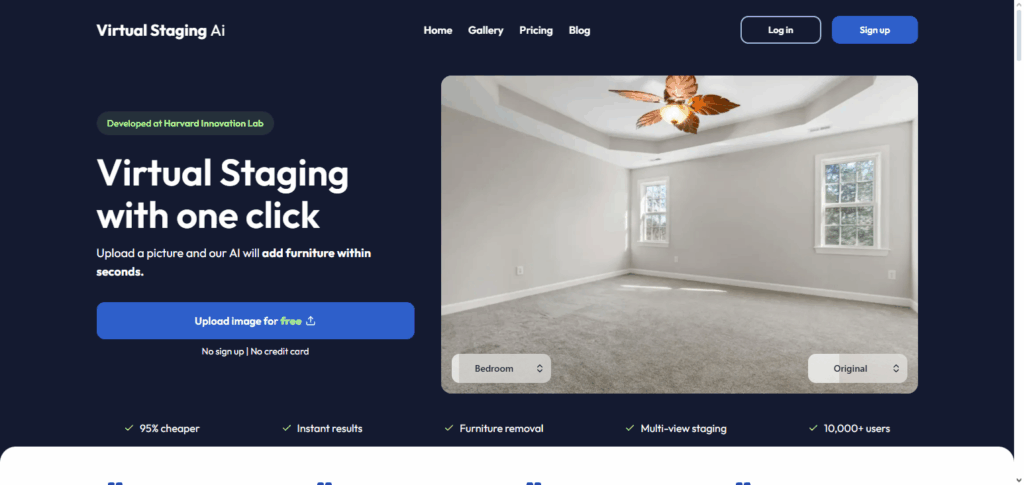
Virtual Staging AI accelerates the pacing of experimentation with staging, décor, and color palettes, thereby saving costs in comparison to physical staging. Its refinement on marketing interiors, design planning, and decisions differentiates Virtual Staging AI as a transformational and effective tool for the new age.
10.DecorMatters AI
DecorMatters AI is an advanced tool in the field of interior design visualization that integrates interactive design elements with augmented reality (AR). Its outstanding functionality is enabling users to place furniture, décor, and accessories in physical locations virtually which offers an immersive preview and simulation of spaces.
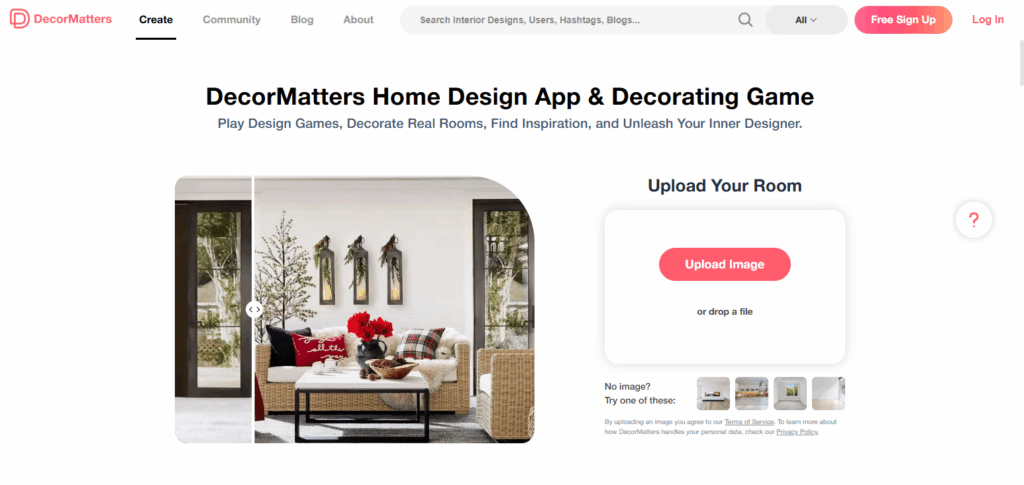
Experimenting with colors, layouts, and styles becomes easier, which allows both designers and homeowners to make decisions in a timely manner. This tool fosters creativity while also simplifying the design process to ensure that spaces are functional and aesthetically appealing.
Pros & Cons AI Tools for Interior Design Visualization
| Pros | Cons |
|---|---|
| Time-Saving – Quickly generates realistic 3D designs and layouts. | Learning Curve – Some tools may require time to master advanced features. |
| Cost-Effective – Reduces need for physical prototypes or staged rooms. | Limited Creativity – AI may not always capture highly unique or unconventional ideas. |
| Realistic Visualizations – Helps clients see accurate previews of spaces. | Software Costs – Advanced AI tools can be expensive or subscription-based. |
| Experimentation Friendly – Easily tests colors, furniture, and layouts. | Dependence on Technology – Requires reliable hardware and software updates. |
| Error Reduction – Minimizes design mistakes before implementation. | Data Privacy – Some tools may require uploading room images, raising privacy concerns. |
| Enhanced Collaboration – Designers and clients can review and approve designs remotely. | Style Limitations – Some AI may favor standard or popular design trends over niche styles. |
Conclusion
The implementation of AI technologies in visualization for interior design has transformed the planning and experiential processes for designers and homeowners. With advanced AI capabilities, realistic 3D renderings, layout suggestions, and design interactivity eliminate guesswork, reduce time, and enhance creativity.
For purposes of staging, remodeling, or creating new interiors, AI technologies actively empower users with informed decision-making and risk-free exploration. In summary, AI-driven visualization has fundamentally redefined and integrated interior design processes, enabling more effective realization of imaginative ideas.
FAQ
How do AI interior design tools work?
They use algorithms, 3D modeling, and rendering technology to analyze room layouts, suggest furniture placement, color schemes, materials, and generate photorealistic visualizations.
Are AI tools suitable for professionals or beginners?
Both. Professionals can streamline workflows and present realistic designs, while beginners can experiment with layouts and décor ideas easily.
Can AI tools save money in interior design projects?
Yes, by reducing physical prototypes, costly mistakes, and unnecessary renovations, AI tools help save both time and money.

